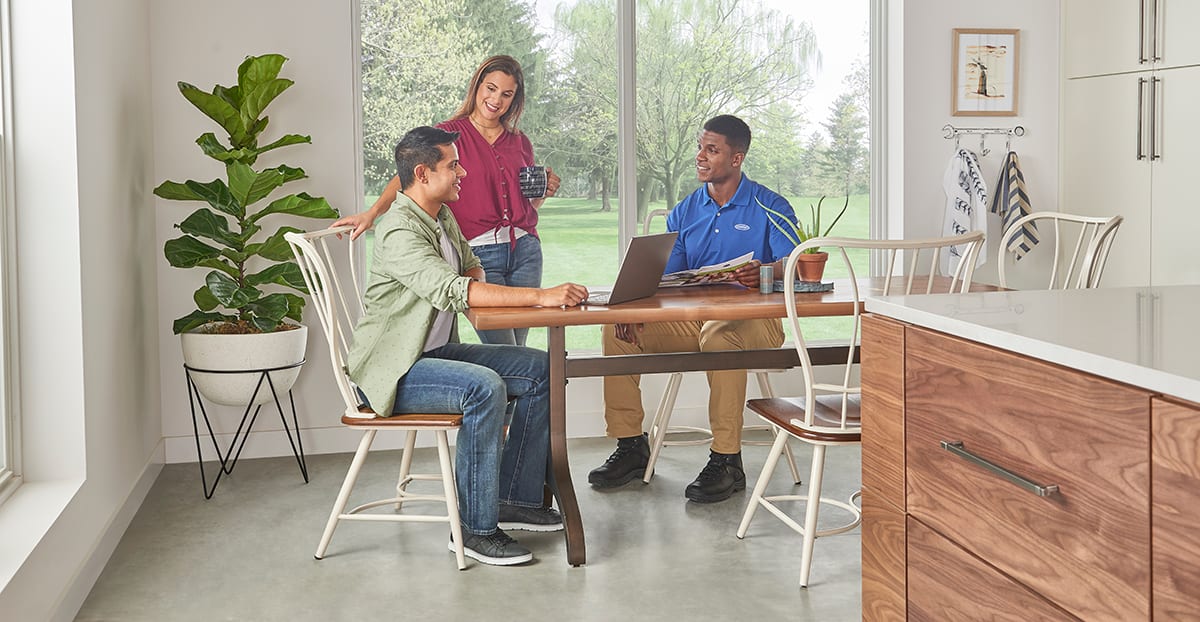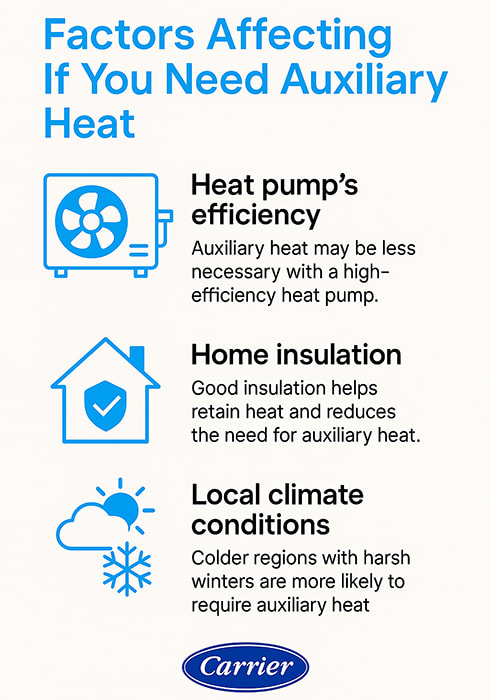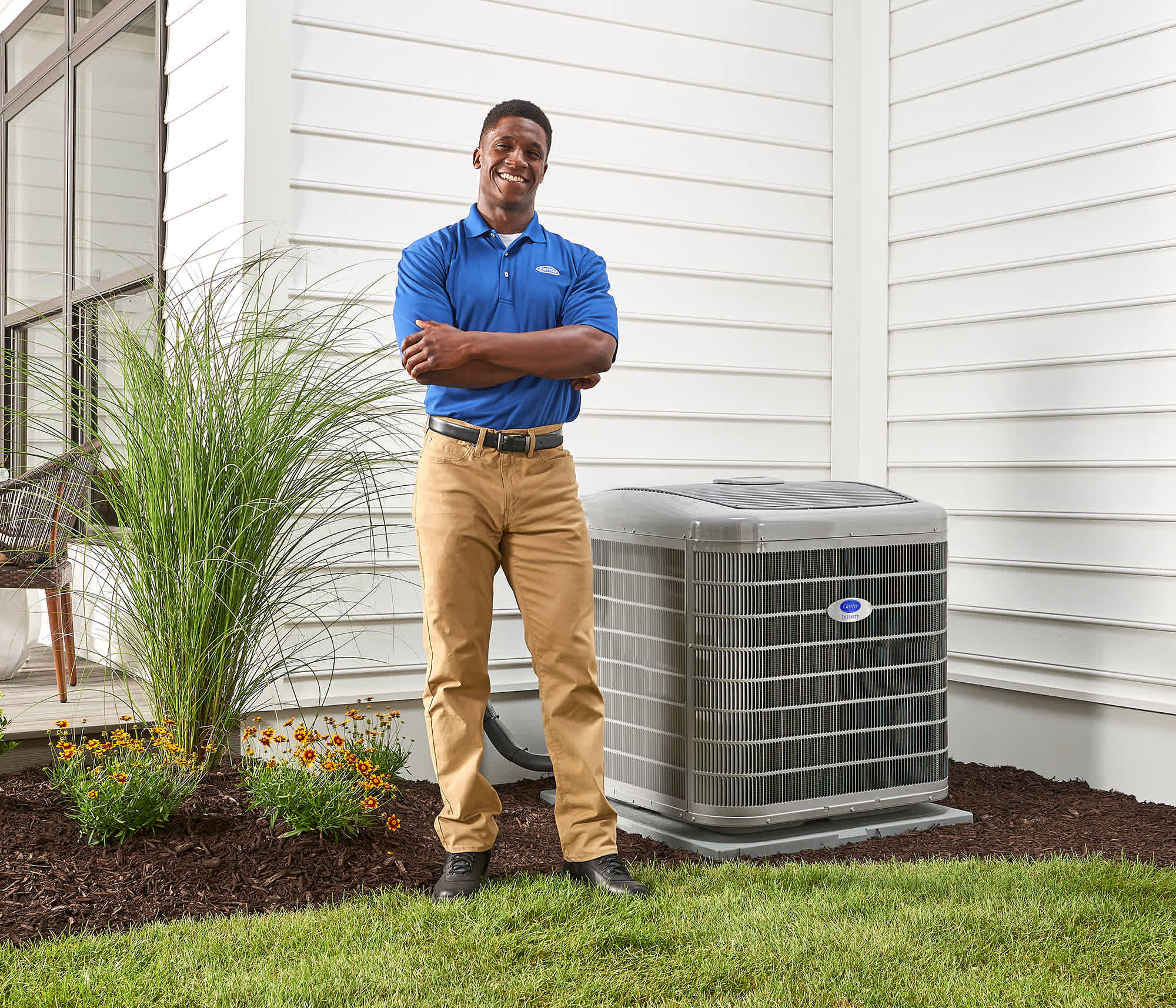Exploring Auxiliary Heat: Functionality and Benefits
Understanding what is auxiliary heat is crucial for homeowners with heat pump systems. What does auxiliary heat mean? It is a vital component providing necessary warmth during chilly weather when the heat pump alone isn't sufficient. This additional heating capability helps ensure homeowners enjoy a comfortable indoor environment while preventing the heat pump from straining under low temperatures. This guide will delve into the operation of auxiliary heat, its activation triggers, differences from emergency heat, and the financial impact of its usage. We'll also share advice on optimizing thermostat settings to boost both comfort and efficiency at home.

Auxiliary Heat: A Secondary Heating Source
So, what does aux heat mean? Auxiliary heat, or backup heat, is a secondary heating source that complements your main system, especially in colder regions. Its role is to step in when the primary heating system struggles to achieve the desired indoor temperature, often during extreme cold spells or when the thermostat demands rapid heating. Typical scenarios include harsh winter days when heat pumps find it challenging to extract adequate warmth from the cold air outside. In addition, auxiliary heat may be triggered during system maintenance to ensure consistent indoor comfort.
Understanding the distinction between what is aux heat and primary heating is crucial. While primary methods like furnaces or heat pumps deliver the main warmth, auxiliary heat acts as a supportive mechanism. Overreliance on auxiliary heat can lead to elevated heating costs. By knowing when and how to utilize auxiliary heat effectively, homeowners can maintain optimal comfort and efficiency.
Triggers for Auxiliary Heat Activation

What does auxiliary heat mean in terms of activation? Auxiliary heat generally activates when outdoor temperatures fall below a certain threshold, typically around 30°F (-1°C), depending on your heat pump's specifications. It's designed to provide supplementary warmth when the primary heating source struggles to maintain a comfortable indoor temperature.
Factors influencing the need for auxiliary heat include your:
- Heat pump's efficiency
- Home insulation. Homes with poor insulation might require auxiliary heat more often due to rapid heat loss, posing challenges for the heat pump.
- Local climate conditions. However, those with a cold climate heat pumps may not have the need for auxiliary heat.
Signs indicating the switch to auxiliary heat include noticeable spikes in your heating bill, as auxiliary heat uses more electricity than standard heat pump operation. You may also experience a warmer air output from your vents or notice a thermostat change indicating auxiliary heat activation. Recognizing these signs enables better monitoring of your system's performance, facilitating informed decisions regarding your heating needs.
Distinguishing Auxiliary Heat from Emergency Heat
Understanding what is auxiliary heat versus emergency heat is essential for effective home heating management. Auxiliary heat supplements your heat pump when it struggles to maintain the desired indoor temperature during colder weather, working alongside the primary system to ensure comfort in freezing conditions. Conversely, emergency heat is activated when the heat pump fails or can't effectively heat your home, bypassing the heat pump and relying solely on electric resistance heating.
Using emergency heat should be reserved for severe weather conditions or when your heat pump malfunctions, as it significantly increases heating costs due to its reliance on electricity. Misuse can lead to elevated bills and unnecessary wear on your system. Leaving the system in emergency heat mode when unneeded results in inflated heating expenses without tangible benefits. Additionally, frequent switching between auxiliary and emergency heat can stress the system, risking premature failures. Monitoring and wisely using these settings ensure both comfort and efficiency.
Financial Considerations of Auxiliary Heat
Grasping the financial implications of what does aux heat mean is essential for homeowners aiming to manage heating bills effectively. Auxiliary heat activates when the primary system struggles to maintain a cozy temperature, leading to higher energy expenses due to the greater electricity consumption of methods like electric resistance heating. Compared to other heating methods, auxiliary heat costs can be significant. While natural gas or heat pumps offer efficient heating, auxiliary heat often relies on electricity, which can be pricier during peak periods.
Frequent auxiliary heat use might indicate issues with your main system, leading to further long-term costs. To minimize auxiliary heat usage and associated expenses, maintain your primary system regularly and improve home insulation to prevent heat loss. Programmable thermostats can optimize heating schedules, reducing reliance on auxiliary heat and lowering heating bills, all while enhancing home comfort.
Connect With A Carrier Dealer On Auxiliary Heat
Not sure if you need auxiliary heat? A Carrier dealer can evaluate your home’s heating needs and existing system to determine whether auxiliary heat is necessary. They’ll help you choose the right setup to ensure efficient and reliable comfort all winter long. Schedule an appointment today.
Auxiliary Heat FAQs
Auxiliary heat kicks in when the outdoor temperature is too low for the heat pump to efficiently extract enough heat from the air. It also activates if the heat pump is malfunctioning or during defrost cycles when the heat pump temporarily reverses.
Auxiliary heat (also called aux heat) is a secondary heating source in a heat pump system that helps warm your home when the primary heat pump can’t keep up with the heating demand, especially in very cold weather.
Auxiliary heat typically uses electric resistance heating elements or a gas furnace to generate heat directly, unlike the heat pump that moves heat from outside to inside. When the system senses the indoor temperature is below the thermostat setting and the heat pump can’t keep up, it switches to auxiliary heat to maintain comfort.
Yes, auxiliary heat and backup heat generally refer to the same concept: a supplemental heat source that supports or replaces the primary heat pump heat when needed.

